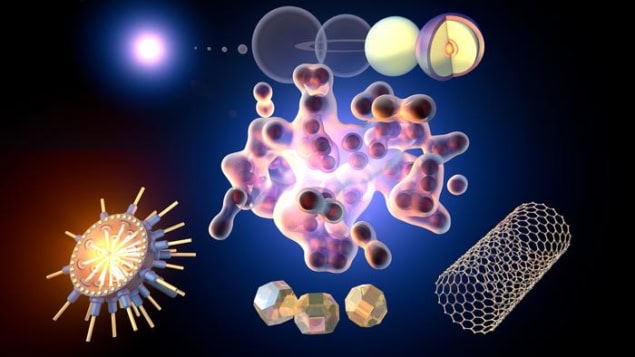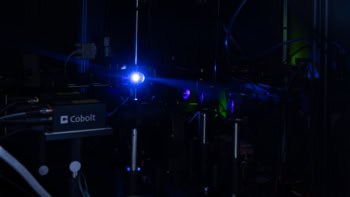
Thanks to new experiments using the DIPOLE 100-X high-performance laser at the European X-ray Free Electron Laser (XFEL), an international collaboration of physicists has obtained the first detailed view of the microstructure of carbon in its liquid state. The work will help refine models of liquid carbon, enabling important insights into the role that it plays in the interior of ice giant planets like Uranus and Neptune, where liquid carbon exists in abundance. It could also inform the choice of ablator materials in future technologies such as nuclear fusion.
Carbon is the one of the most abundant elements on Earth and indeed the universe, but we still know very little about how it behaves in its liquid state. This is because producing liquid carbon is extremely difficult: at ambient pressures it sublimes rather than melts; and the liquid phase requires pressures of at least several hundred atmospheres to form. What is more, carbon boasts the highest melting temperature (of roughly 4500 °C) of all known materials under these high-pressure conditions, which means that there is no substance that can contain it for long enough to be studied and characterized.
In situ probing laser compression technique
There is an alternative, though, which involves using X-ray free electron laser pulses – such as those produced at the European XFEL – to transform solid carbon into a liquid for a few nanoseconds. The next challenge is to make measurements during this very short period of time. But this is exactly what a team led by Dominik Kraus of the University of Rostock and the Helmholtz-Zentrum Dresden-Rossendorf (HZDR) has succeeded in doing.
In their work, Kraus and colleagues transiently created liquid carbon by driving strong compression waves into solid carbon samples using the pulsed high-energy laser DIPOLE 100-X, which is a new experimental platform at the European XFEL. In this way, the researchers were able to achieve pressures exceeding one million atmospheres, with the compression waves simultaneously heating the samples to around 7000 K to form liquid carbon. They then obtained in situ snapshots of the structure using ultrabright X-ray pulses at the European XFEL that lasted just 25 fs – that is, about 100,000 times shorter than the already very short lifetime of the liquid carbon samples.
Relevance to planetary interiors and inertial fusion
Studying liquid carbon is important for modelling the interior of planets such as the ice giants Neptune and Uranus, as well as the atmosphere of white dwarfs, in which it also exists, explains Kraus. The insights gleaned from the team’s experiments will help to clarify the role that liquid carbon plays in the ice giants and perhaps even comparable carbon-rich exoplanets.
Liquid carbon also forms as a transient state during some technical processes, like in the synthesis of carbon-based materials such as carbon nanotubes, nanodiamonds or “Q-carbon”, and may be key for the synthesis of new carbon materials, such as the long sought after (but still only predicted) “BC-8” structure. The team’s findings could also help inform the choice of materials for inertial fusion implosions aiming for clean and reliable energy production, where carbon is used as an ablator material.
“Because of its relevance in these areas, I had already tried to study liquid carbon during my doctoral work more than 10 years ago,” Kraus says. “Without an XFEL for characterization, I could only obtain a tiny hint of the liquid structure of carbon (and with large error bars) and was barely able to refine any existing models.”
Until now, however, this work was considered as being the best attempt to characterize the structure of liquid carbon at Mbar pressures, he tells Physics World. “Using the XFEL as a characterization tool and the subsequent analysis was incredibly simple in comparison to all the previous work and, in the end, the most important challenge was to get the European XFEL facility ready – something that I had already discussed more than 10 years ago too when the first plans were being made for studying matter under extreme conditions at such an installation.”

Synthetic diamonds grow in liquid metal at ambient pressure
The results of the new study, which is detailed in Nature, prove that simple models cannot describe the liquid state of carbon very well, and that sophisticated atomistic simulations are required for predicting processes involving this material, he says.
Looking forward, the Rostock University and HZDR researchers now plan to extend their methodology to the liquid states of various other materials. “In particular, we will study mixtures of light elements that may exist in planetary interiors and the resulting chemistry at extreme conditions,” reveals Kraus. “This work may also be interesting for forming doped nanodiamonds or other phases with potential technological applications.”



